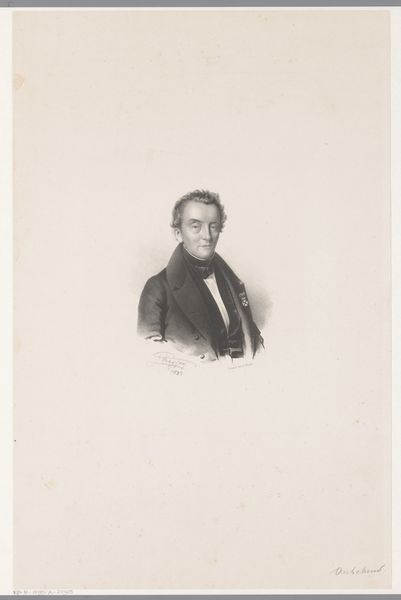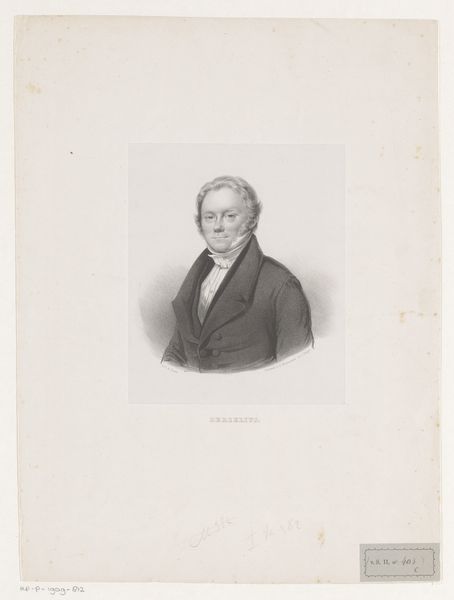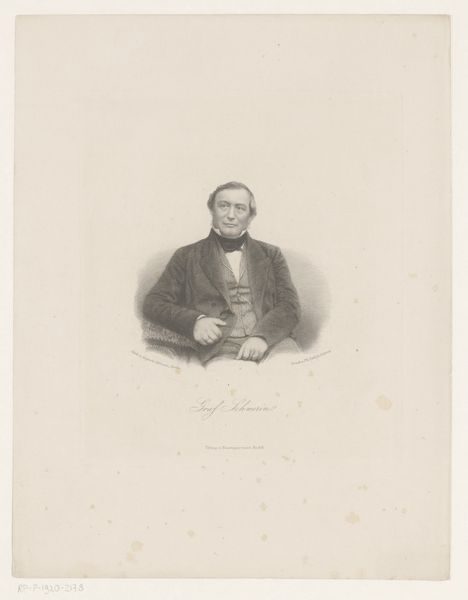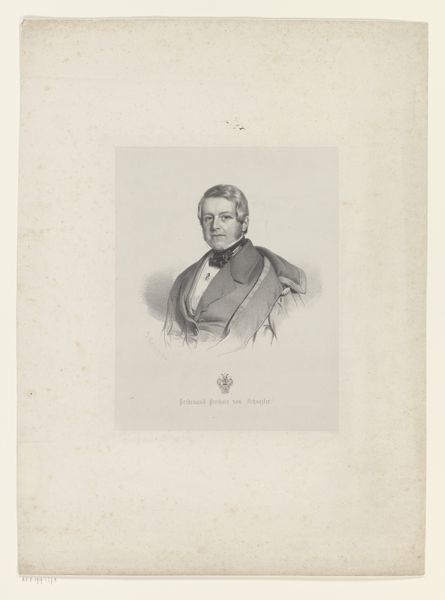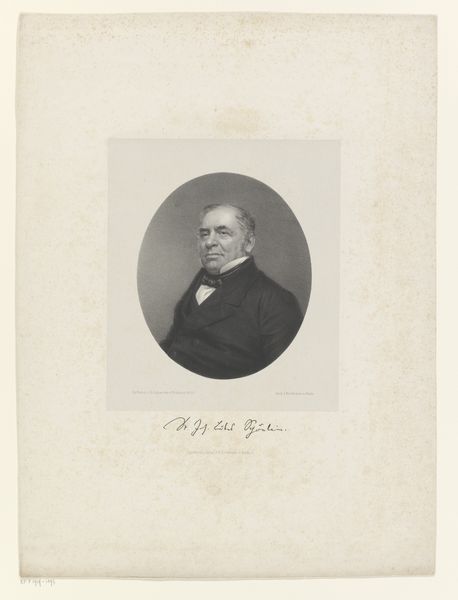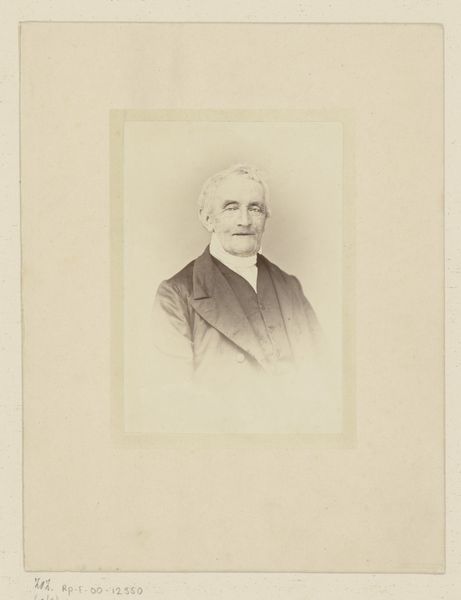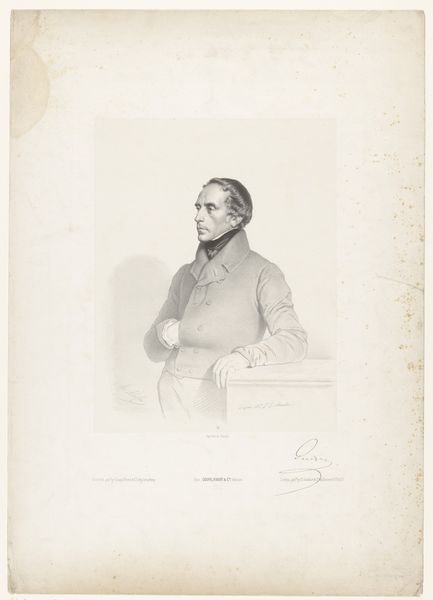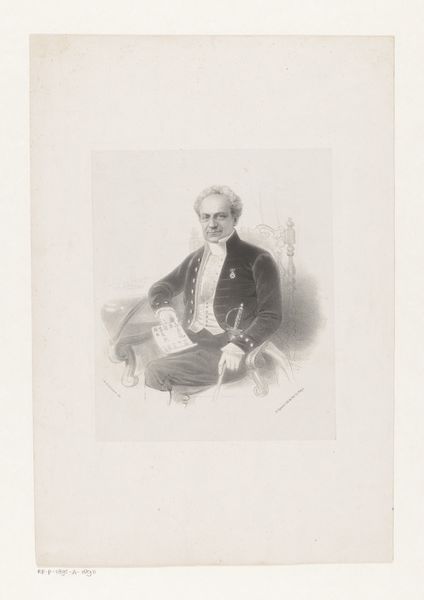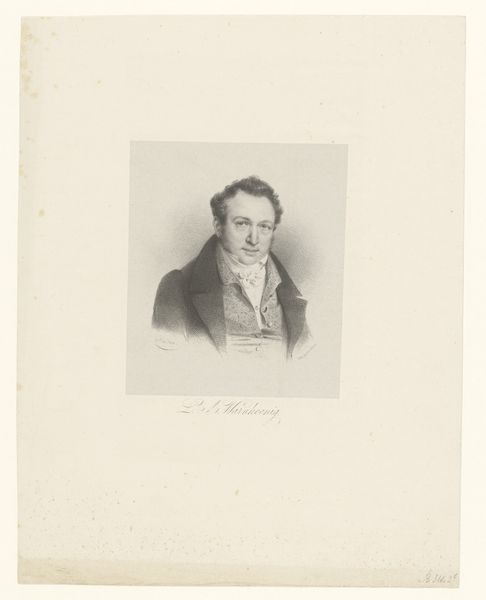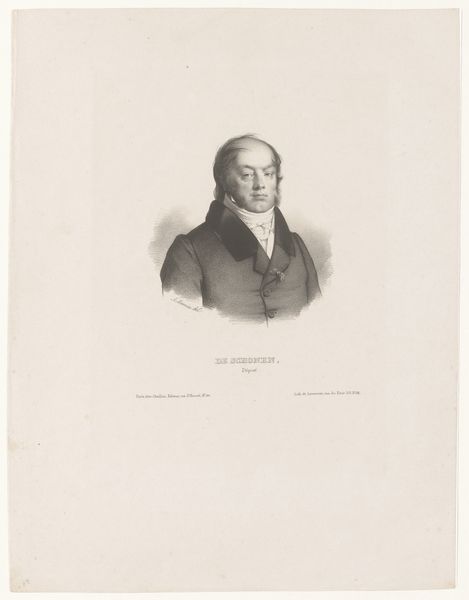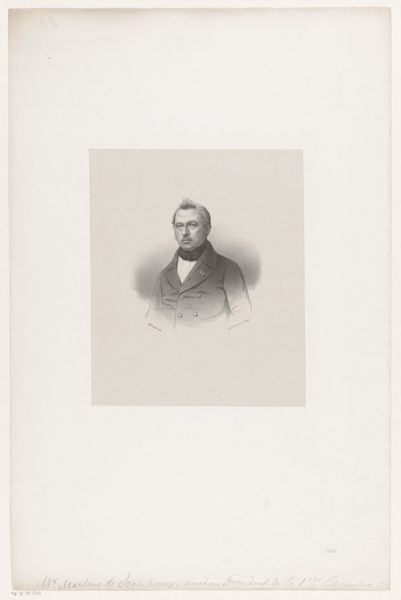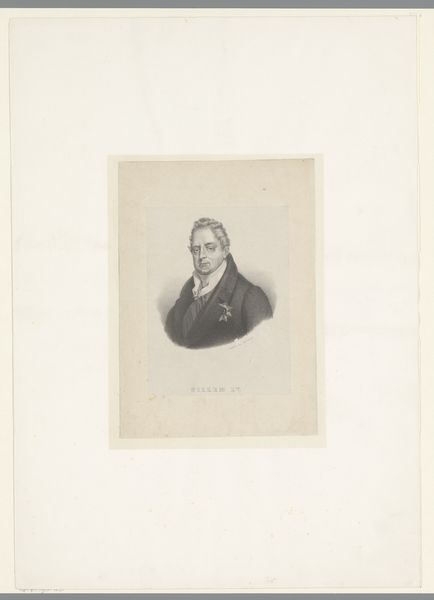
print, graphite
#
portrait
# print
#
graphite
#
history-painting
#
academic-art
#
realism
#
monochrome
Dimensions: height 535 mm, width 355 mm
Copyright: Rijks Museum: Open Domain
This is a portrait of Hendrik Johan Caan van Hoekenburg, made by Johan Hendrik Hoffmeister in the 19th century, using lithography. The lithographic process is quite fascinating. Unlike painting, which builds up layers of pigment, lithography is all about careful planning and control, using the chemical repulsion of oil and water. The artist draws on a flat stone or metal plate with a greasy crayon, then treats the surface with a chemical etch. This makes the untouched areas attract water and repel the oily ink, while the drawn areas hold onto the ink. The plate is then inked and pressed onto paper, creating a print. The subtle gradations of tone in this portrait – notice the soft shadows on the face, and the detail in the sitter's clothing – show the hand of a skilled practitioner. This process allowed for multiple identical images to be produced, making it an ideal medium for circulating likenesses of prominent figures. So, the next time you look at a print, think about the work involved, and the way that materials, making, and context can come together to create meaning.
Comments
No comments
Be the first to comment and join the conversation on the ultimate creative platform.
